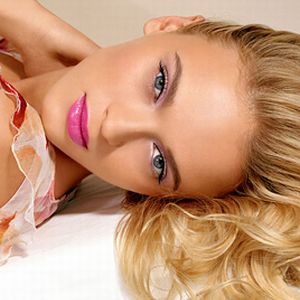
Water - The Beverage Your Body Needs Most
Drinking water is so important for good health. When you were a kid in school, you learned that each molecule of water is made up of two hydrogen atoms and one oxygen atom. You may also have learned that it was great fun to fill up your squirt guns with water, at least until the principal caught you. What you may not have learned, however, was how much water you needed in order to be a healthy human being.
Why You Need to Drink Water
Your body is estimated to be about 60 to 70 percent water. Blood is mostly water, and your muscles, lungs, and brain all contain a lot of water. Your body needs water to regulate body temperature and to provide the means for nutrients to travel to all your organs. Water also transports oxygen to your cells, removes waste, and protects your joints and organs.
Signs of Dehydration
You lose water through urination, respiration, and by sweating.If you are very active, you lose more water than if you are sedentary. Diuretics such as caffeine pills and alcohol result in the need to drink more water because they trick your body into thinking you have more water than we need.
Symptoms of mild dehydration include chronic pains in joints and muscles,lower back pain, headaches and constipation. A strong odor to your urine, along with a yellow or amber color indicates that you may not be getting enough water. Note that riboflavin, a B Vitamin, will make your urine bright yellow. Thirst is an obvious sign of dehydration and in fact, you need water long before you feel thirsty.
How Much Water do You Need to Drink?
A good estimate is to take your body weight in pounds and divide that number in half. That gives you the number of ounces of water per day that you need to drink. For example, if you weigh 160 pounds, you should drink at least 80 ounces of water per day. If you exercise you should drink another eight ounce glass of water for every 20 minutes you are active. If you drink alcohol, you should drink at least an equal amount of water. When you are traveling on an airplane, it is good to drink eight ounces of water for every hour you are on board the plane. If you live in an arid climate, you should add another two servings per day. As you can see, your daily need for water can add up to quite a lot.
Twenty percent of your water need will come from the foods you eat. The rest of your water need should come from the beverages you drink. Water is the best choice. Sodas have a lot of sugar in them, so if you drink sodas, you may take in more calories than you need. Herbal teas that aren't diuretic are fine. Sports drinks contain electrolytes and may be beneficial, just look out for added sugar and calories that you don't need. Juices are good because they have vitamins and nutrients.
Caffeinated beverages will also add to your daily water need. Even though caffeine is a diuretic, if you regularly consume caffeine, your body will regulate itself to that diuretic effect.
Drink Enough Water
It may be difficult to drink enough water on a busy day. Be sure you have water handy at all times by keeping a bottle for water with you when you are working, traveling, or exercising. If you get bored with plain water, add a bit of lemon or lime for a touch of flavor. There are some brands of flavored water available, but watch for extra calories.
Sources:
Spigt MG, Kuijper EC, Schayck CP, Troost J, Knipschild PG, Linssen VM, Knottnerus JA. "Increasing the daily water intake for the prophylactic treatment of headache: a pilot trial." Eur J Neurol. 2005 Sep;12(9):715-8.
Armstrong LE, Pumerantz AC, Roti MW, Judelson DA, Watson G, Dias JC, Sokmen B, Casa DJ, Maresh CM, Lieberman H, Kellogg M. "Fluid, electrolyte, and renal indices of hydration during 11 days of controlled caffeine consumption." Int J Sport Nutr Exerc Metab. 2005 Jun;15(3):252-65.




 Summer is the season of the year during which women want to be the most beautiful and admired. This is when we go on holidays, have fun and meet new people. This is the time when we want to make use of all the resources in order to look glamorous and fresh at the same time.
Summer is the season of the year during which women want to be the most beautiful and admired. This is when we go on holidays, have fun and meet new people. This is the time when we want to make use of all the resources in order to look glamorous and fresh at the same time. Under eye foundation, especially if it consists of a creamy under eye concealer, can also cause problems. Many of us have problems with the under eye shadows or bags. But if we use concealer in excess for these eye problems during the hot season, the heat outside is very likely to make the foundation leak and the effect will be rather a hilarious one.
Under eye foundation, especially if it consists of a creamy under eye concealer, can also cause problems. Many of us have problems with the under eye shadows or bags. But if we use concealer in excess for these eye problems during the hot season, the heat outside is very likely to make the foundation leak and the effect will be rather a hilarious one.

